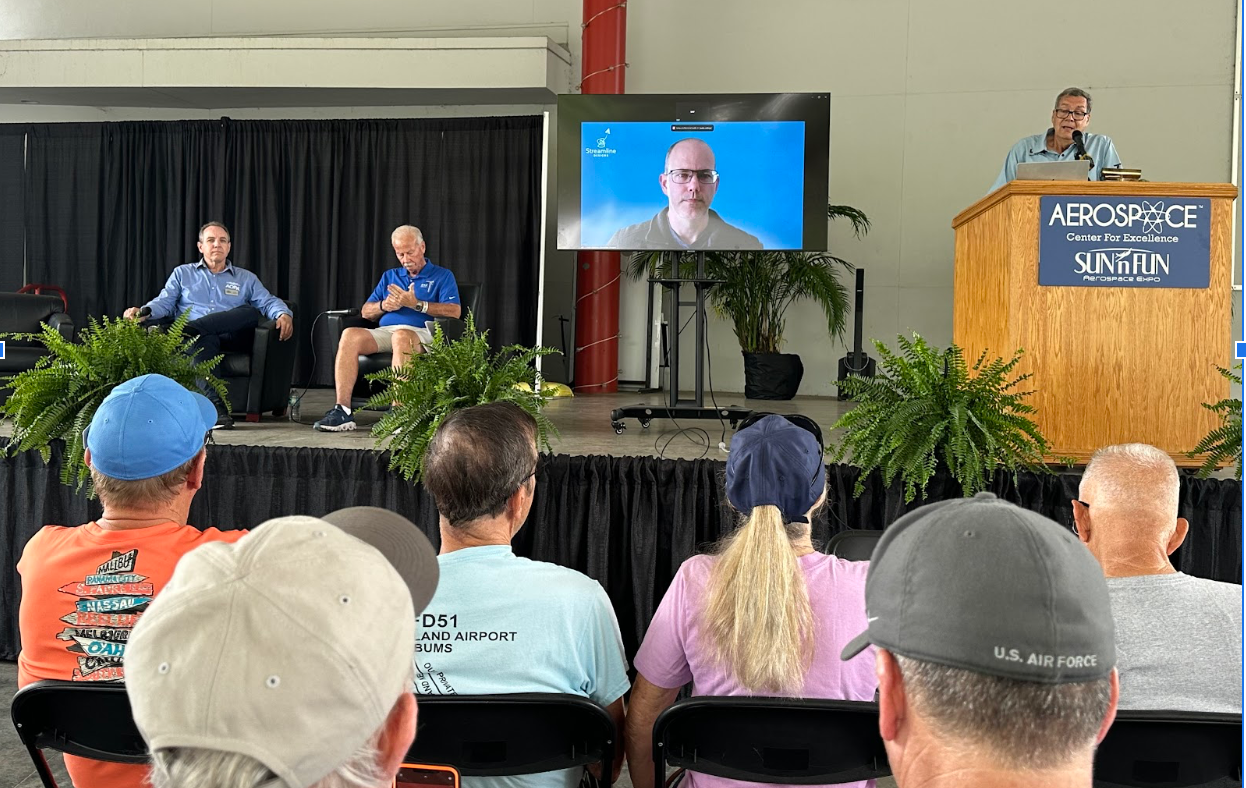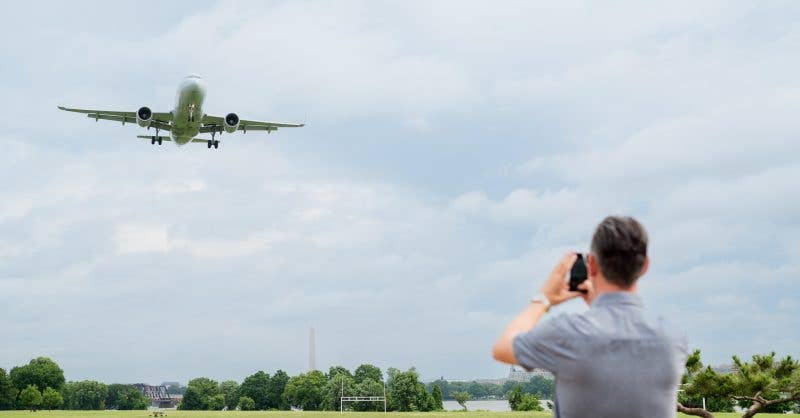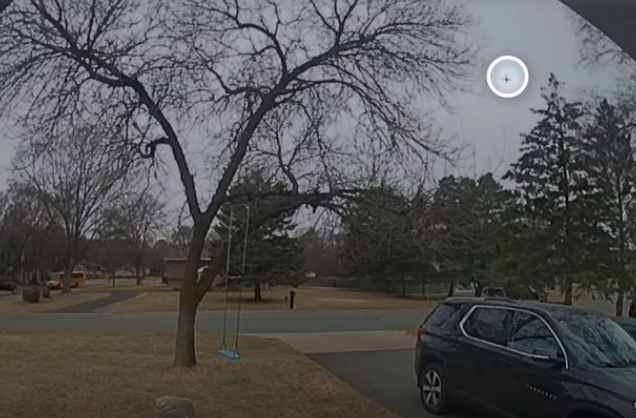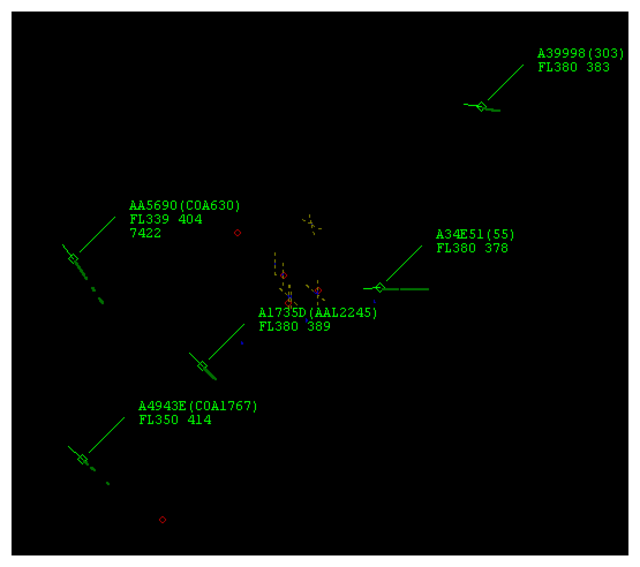The Age 60 Rule: How It Came To Be
Fast-tracked into FAR Part 121 by the FAA’s first administrator, General Elwood R. (Pete) Quesada, in a back-room deal with his old friend C. R. Smith, CEO of American Airlines, the FAA’s Age 60 Rule has survived four decades of legal and political wrangling, and remains as controversial today as when enacted in 1960. Vincent Czaplyski traces the origins and history of the rule, describes various challenges it has faced over the years, and explains why medical and safety arguments offered to support it can be misleading.
| Authors Note: I'm indebted to former Pan Am and United Airlines captain Samuel D. Woolsey for much of the background information contained in this article. Captain Woolsey retired at age 60 from United Airlines and is about to embark upon a new career as an attorney. A longtime critic and opponent of the FAA's Age 60 Rule, he has documented in various essays the history of the regulation, including the oftentimes politically-charged background events that surrounded its enactment. It was not my intent to revisit the many arguments that have been made, both for and against the rule, in this article. Rather, I wanted to give an overview of how the rule came to be in the first place, and suggest how medical and safety arguments put forth to support it can be misleading. Finally, the opinions expressed in this article are my own, and should not be considered to represent a particular position of my employer or union in regards to the Age 60 Rule. |
Career coup de grace. The best thing that everhappened to a seniority list. A moral outrage. Take your pick -- the FAA'sso-called Age 60 Rule has been called these and many other things. Where doesthe rhetoric end and the truth begin? That, apparently, depends upon one'sperspective: junior or senior pilot, career DOT bureaucrat, airline managementor white-knuckle passenger. The rule, enshrined in section 121.383{c} of theFederal Aviation Regulations, mandates that a pilot may not fly in revenueservice for a Part 121 air carrier upon reaching his or her 60th birthday. Alook back at the rule's origins suggests that politics had more to do with itsenactment than did findings of medical science, or otherwise well-documentedconcerns about air safety. Despite numerous challenges to its existence,including a recently-decided U.S. District court case, the rule remains inplace. For the foreseeable future at least, it will continue to affect thecareer of any pilot who flies for a Part 121 air carrier.
How it all started
 How did the Age 60Rule come to be? As the decade of the 50s neared an end, there was nofederally-mandated retirement age yet established for commercial pilots.However, the major airlines had begun to devise and unilaterally institute pilotretirement plans that called for retirement at age 60. This was in keeping withhow these companies treated other employees. The Air Line Pilots Association (ALPA),which represented the pilots of these carriers, opposed age-based retirement asa matter of policy. Eventually ALPA began to challenge company-imposed age-basedretirements through the grievance process. (ALPA would later reverse itsofficial position on this issue, and today supports a continuation of theexisting Age 60 Rule.)
How did the Age 60Rule come to be? As the decade of the 50s neared an end, there was nofederally-mandated retirement age yet established for commercial pilots.However, the major airlines had begun to devise and unilaterally institute pilotretirement plans that called for retirement at age 60. This was in keeping withhow these companies treated other employees. The Air Line Pilots Association (ALPA),which represented the pilots of these carriers, opposed age-based retirement asa matter of policy. Eventually ALPA began to challenge company-imposed age-basedretirements through the grievance process. (ALPA would later reverse itsofficial position on this issue, and today supports a continuation of theexisting Age 60 Rule.)
According to S. D. Woolsey (Commercial Aviation's "Age-60Fraud," Danville, Calif., September, 1992), the first trio of suchgrievances took place during 1958-59, directed against TWA, Western and AmericanAirlines (whose pilots at the time were represented by ALPA). Interestingly,Western and TWA management used medical and flight-safety arguments to supporttheir positions. ALPA, though, succeeded in rebutting these points. In eachcase, a neutral arbitrator decided the grievance in favor of the union, andagainst the airline.
 C. R. Smith (1899-1990)
|
But possession, as an old legal adage points out, is nine-tenths of the law.American Airlines founder and CEO C.R.Smith, unhappy with thearbitrator's decision, refused to reinstate the three pilots who had brought theretirement grievance at his carrier. This issue (and a variety of others)eventually provoked ALPA to call for a strike against American. After a 21-daywalkout, the pilot group claimed victory in regards to most issues. CEO Smithwould not, however, allow the three pilots to return to work.
C.R. and Pete's back-room deal
Without a legal basis for his actions, Smith turned to a tried-and-truemethod for getting what he wanted: the old-boy network. He contacted a longtimefriend and associate, General Elwood R. (Pete) Quesada, who just happened to bethe first appointed administrator of the newly-created Federal AviationAdministration. In a letter dated February 5, 1959, Smith implored his oldfriend to proclaim age 60 as a federally-mandated retirement age for pilots.Quesada obliged almost immediately by proposing what we now know as the Age 60Rule. (This episode is documented in a series of letters between Smith andQuesada, which were obtained from internal FAA files as the result of a Freedomof Information Act lawsuit.)
In the best of smoke-filled-room tradition, the FAA issued its Notice ofProposed Rulemaking (NPRM) less than one month after Quesada received Smith'spersonal entreaty asking for such a rule. The NPRM included three versions ofthe regulation, intended for air carrier, air taxi, and general aviation pilots.Written comments were then accepted, but no hearing was ever held at which theproposal could be debated. Despite broad industry opposition to it from avariety of aviation organizations, the Final Rule, pertaining only to aircarrier pilots, was published on December 5, 1959. It became effective on March15, 1960.
Quesada referred to certain "medical uncertainties" concerningpilot health after age 60 as the primary basis for issuing the rule. To avoidend runs around the regulation based on waivers and exemptions that might havebeen sought by pilots, it was not made part of the medical section of theregulations (Part 67). Instead, it was placed in the operational part of theFARs (Part 121), making it immune to any such attempts by individuals.
 Thereis one especially fitting footnote to this early chapter in the ongoing saga ofthe Age 60 Rule. Administrator Quesada retired from the FAA in January of 1962,and was immediately elected to American Airline's Board of Directors.
Thereis one especially fitting footnote to this early chapter in the ongoing saga ofthe Age 60 Rule. Administrator Quesada retired from the FAA in January of 1962,and was immediately elected to American Airline's Board of Directors.
The FAA's story (and they're sticking to it)
 Notsurprisingly, FAA officials offer a somewhat different interpretation of events.The agency maintains that standard rulemaking procedures were followed back in1959 (despite the lack of a public hearing on the matter). The rule, it insists,"…was promulgated in order to maintain a high level of safety in part 121operations." Most assuredly, it "… was not issued to facilitate theoperations of any air carrier." To paraphrase a popular country westernsong, that's their story and they're sticking to it. Oddly enough, the officialdocket for the 1959 rulemaking process was lost while in the agency'spossession. This fact, which came to light during subsequent lawsuits over thematter, made procedural challenges to the rulemaking process difficult forplaintiffs to pursue in court. Go figure.
Notsurprisingly, FAA officials offer a somewhat different interpretation of events.The agency maintains that standard rulemaking procedures were followed back in1959 (despite the lack of a public hearing on the matter). The rule, it insists,"…was promulgated in order to maintain a high level of safety in part 121operations." Most assuredly, it "… was not issued to facilitate theoperations of any air carrier." To paraphrase a popular country westernsong, that's their story and they're sticking to it. Oddly enough, the officialdocket for the 1959 rulemaking process was lost while in the agency'spossession. This fact, which came to light during subsequent lawsuits over thematter, made procedural challenges to the rulemaking process difficult forplaintiffs to pursue in court. Go figure.
(The agency's views on the Age 60 Rule are available on the Web at http://www.connix.com/~markh/age60.html.)
In any case, once it became law, the Age 60 Rule opened up a firestorm ofcontroversy that continues to this day. Faced with growing criticism over itsunilateral actions in creating the regulation, the FAA pointed to the medicalarguments it raised during the 1959 rulemaking process. The agency noted thenthat a progressive deterioration of certain important physiological andpsychological functions occurs with age. It observed that "significantmedical defects" occur due to age-related degeneration of the body. Itstated that sudden incapacity due to medical defects such as heart attacks andstrokes can occur without warning. Most alarming of all, the FAA said that suchproblems occur with greater frequency in any group reaching age 60, and thatthere is no way to predict with certainty which individuals will most likelyexperience such problems.
Can the rule be justified?
 Critics demandedhard-and-fast proof from the FAA that would justify the agency's conclusions.Over the years, the agency has offered up a variety of medical and aviationsafety studies to support its position. A look at these studies, though, showsthat they do not clearly implicate the pilot population over age 60 as a safetymenace. In some cases, the studies did not look at this particular subgroup ofpilots. In others, they failed to follow objective accepted methodologies thatwould have given them validity. In still others, they seem to have fallen victimto political maneuvering that again detracted from their usefulness inaddressing issues surrounding the Age 60 Rule. The result is that considerabledisagreement still exists within the medical and aviation safety communitiesover exactly what risk is represented by continuing the careers of pilots beyondage 60.
Critics demandedhard-and-fast proof from the FAA that would justify the agency's conclusions.Over the years, the agency has offered up a variety of medical and aviationsafety studies to support its position. A look at these studies, though, showsthat they do not clearly implicate the pilot population over age 60 as a safetymenace. In some cases, the studies did not look at this particular subgroup ofpilots. In others, they failed to follow objective accepted methodologies thatwould have given them validity. In still others, they seem to have fallen victimto political maneuvering that again detracted from their usefulness inaddressing issues surrounding the Age 60 Rule. The result is that considerabledisagreement still exists within the medical and aviation safety communitiesover exactly what risk is represented by continuing the careers of pilots beyondage 60.
For instance, the FAA's own Civil Aeronautical Medical Institute (CAMI)regularly reports on medical certification issues pertaining to pilots in thiscountry. In 1990, CAMI published a report specifically dealing with the healthof Part 121 airline pilots. The authors note that company pre-screening ofairline pilot candidates and the requirements for issuance of a first classmedical certificate result in the group being "essentially purged ofdisease prevalence that contributes to higher rates in non-pilot groups."
In 1989, the Government Accounting Office published a study of the Age 60Rule at the behest of a member of Congress. In its report, the GAO referencedseven major studies used by the FAA to justify continuance of the Age 60 Rule.Interestingly, upon closer examination, some of these studies would seem tosupport just the opposite position.
Questionable studies
 The first ofthe seven was the United States Navy's "1000 Aviator Study." Thisreport followed the health of 1000 military pilots over a period of time. Amongits conclusions, the authors pointed out that pilots in the study appeared tohave a lower risk for a variety of disease processes compared with similar-agepopulations, and that then existing medical testing was capable of identifyingsubgroups at higher risk of certain diseases.
The first ofthe seven was the United States Navy's "1000 Aviator Study." Thisreport followed the health of 1000 military pilots over a period of time. Amongits conclusions, the authors pointed out that pilots in the study appeared tohave a lower risk for a variety of disease processes compared with similar-agepopulations, and that then existing medical testing was capable of identifyingsubgroups at higher risk of certain diseases.
A second study referenced in the GAO report is one entitled "TheGeorgetown Clinical Research Institute Study, 1960s." Funded by the FAAitself at a cost of $1.2 million, it was intended (among other goals) to justifya proposed change to the existing air traffic controllers' retirement system. Itdid not specifically seek to study pilot health. Originally planned to last 30years, it was terminated by Congress after little more than five years, when anaudit revealed that no meaningful data had been collected. Nor had anyrecognized methodology for analysis of data even been developed. Despite beinglambasted as a colossal waste of time and money, the report was nonethelessresurrected by the FAA and used to justify continuance of the Age 60 Rule.
Another health study, conducted in conjunction with the Georgetown study, wasknown as "The Lovelace Foundation Studies, 1960s." Unlike theGeorgetown study, it looked only at the health of airline and some militarypilots. It too was harshly criticized as being flawed by the same governmentcommittee that terminated the Georgetown study. And it too was used by the FAAto support its position on the Age 60 Rule. Interestingly, though, the authorsdeclared that the study's participants represented a "super selectgroup" of individuals, "characterized by generally longer, healthierand more productive lives than the population as a whole."
"The Bohannon Report" is yet another study referenced in the GAOreport. It is noteworthy because it was commissioned by the FAA in 1969 toaddress directly the health issues raised by the Age 60 Rule. As such, it wouldappear to carry more weight than the previously-mentioned studies. Its authorwas R. L. Bohannon, M.D., former Surgeon General of the U. S. Air Force.Unfortunately for the FAA, in his report Dr. Bohannon recommended that theagency forget about using age as the determining criteria. Rather, he suggestedthat a method of pilot medical certification be adopted based on theidentification of specific risk factors within the pilot population. Presumablybecause it conflicted with the agency's official position on the matter, the FAAdid not release the report, or even publicly acknowledge its existence, until 10years after its completion.
The FAA tried again in 1979 to find a study that would definitively supportthe Age 60 Rule. It commissioned a private consulting firm, Goddard &Associates, to undertake an "unbiased" study to determine whether ornot the Age 60 Rule should be retained. Goddard & Associates was headed byJames L. Goddard, M.D., Civil Air Surgeon during the late 1950s when the rulewas proposed and adopted. This time, the report's conclusions unequivocallysupported the FAA's position on retaining the Age 60 Rule. However, in asubsequent lawsuit, an FAA medical official testified that he had recommendedthe study be performed in order to defuse congressional interest in amending therule. The same official also admitted to selecting Dr. Goddard to head thestudy, since he knew Dr. Goddard had been a proponent of the rule since itsinception. Thus, the supposed "unbiased" nature of this study isseriously suspect.
Other studies relied upon by the FAA in support of the Age 60 Rule containflaws in methodology that cast doubt on their true usefulness as objectivepolicy-making tools. One, titled the "Golaszewski Study," againcommissioned by the FAA, was intended to look at the incidence of accident ratesin various segments of the pilot population. It was never accepted or publishedby the agency, however, because of major data deficiencies and other problemsthat were eventually identified. Nevertheless, with full knowledge of theseflaws, the FAA submitted the report as a finding of fact in court, whiledefending a 1990 lawsuit challenging the Age 60 Rule.
No medical basis for rule, says the NIH
 A finalyear-long study referenced in the GAO report, undertaken by the NationalInstitute of Health (NIH) and the Institute of Medicine in 1981 at the behest ofCongress, was yet another intended to shed light on the Age 60 Rule controversy.This report concluded that there existed no medical basis for the rule. An NIHcommittee later convened to review the report's findings recommended that therule be retained temporarily, that it be extended to Part 135 operations, andthat a select group of older pilots be exempted from it, in order to assess thefeasibility of medically qualifying pilots over age 60 on an individual basis.
A finalyear-long study referenced in the GAO report, undertaken by the NationalInstitute of Health (NIH) and the Institute of Medicine in 1981 at the behest ofCongress, was yet another intended to shed light on the Age 60 Rule controversy.This report concluded that there existed no medical basis for the rule. An NIHcommittee later convened to review the report's findings recommended that therule be retained temporarily, that it be extended to Part 135 operations, andthat a select group of older pilots be exempted from it, in order to assess thefeasibility of medically qualifying pilots over age 60 on an individual basis.
The FAA responded to these recommendations by publishing an Advance Notice ofProposed Rulemaking (APNRM), in which it proposed extending the Age 60 Rule toinclude flight engineers (something the committee did not suggest). It ignoredits recommendation to extend the rule to Part 135 pilots. It did solicitcomments on the feasibility of a test program to study a group of captains ableto fly until their 62nd birthday. But after two years with no official actiontaken, the ANPRM was withdrawn by the agency.
In 1985, the NIH formally abandoned its previous position on the Age 60 Ruleand decided instead that medical testing of pilots after age 60 was bothpossible and desirable. It stated that such testing would allow them to safelycontinue flying after age 60 in commercial aviation, and that ongoing testingrepresented an alternative that was preferable to the current age-based rule.
 77-year-old John Glenn in space |
And the controversy continues
And so the saga of the Age 60 Rule continues. Born of backroom politics, ithas survived through nearly four decades of legal and political wrangling. Thebattle shows no sign of waning as supporters and detractors continue to debatethe implications of a pilot's 60th birthday.







